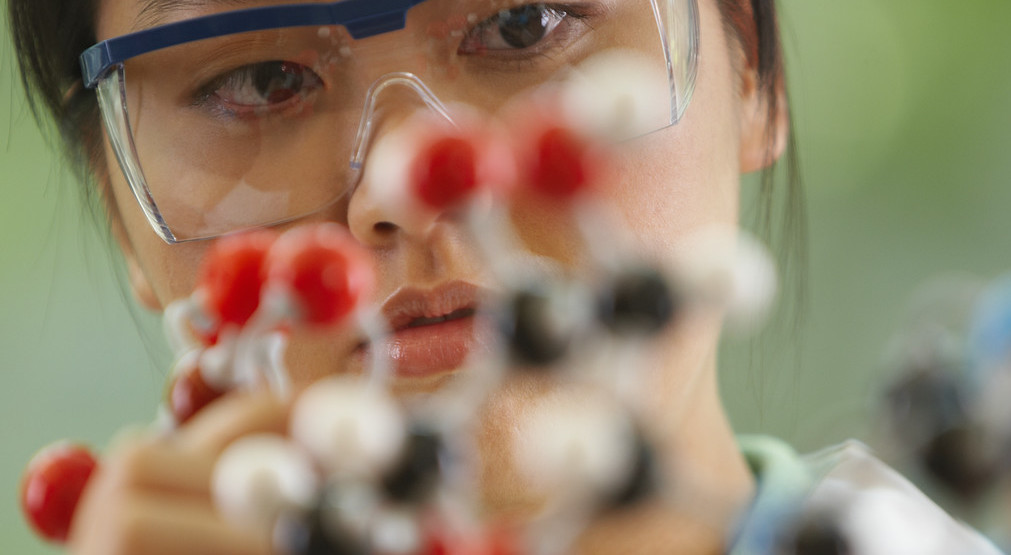How to Tackle the ACT Science Questions
By Dominick Cooper, Director of Launch Academy, 2011 DaVinci Scholar Winner, 2012 Young Entrepreneur of the Year nominee, and university guest speaker on education
The ACT Science section is a tricky bugger. 40 questions in 35 minutes. And that’s not even counting the reading!
But it’s not impossible.
Graphs with lots of lines, passages with latin jargon, and
scientists who argue all contribute to the myth that the science section is “beyond me.” But it’s not true!
And here is why.
The science section is NOT a science section!
Here’s what I mean. The section doesn’t measure your knowledge of science at all. Unlike the math and english sections where you have to know certain math formulas or grammar rules prior to taking the test, the science section doesn’t require you to know any science before hand. But here’s what it does require:
It requires you to know how to read graphs, make inferences, and find similarities and differences between passages. If you can do those things well, you will ROCK this Science ACT section.
Here’s a few ways we at Launch Academy tackle the ACT science section.
First off there’s three types of sections:
- 3 Data Representation passages
- 3 Research Summaries passages
- 1 Conflicting Viewpoints passage
Of the 40 questions on the Science Reasoning Test, 15 are in the Data Representation passages, 18 are in the Research Summaries, and 7 are in the Conflicting Viewpoints passage. In these passages, there’s four main types of questions:
- Read the Chart. These are the easiest. If you know how to read charts and graphs and find values, then you’ll do well on these. If you need some practice, check out these exercises.
- Use the Chart. These ones are a little more difficult. They usually require you to make inferences and use the data in the charts to support a theory or proposition. If you’re good at making inferences (like on the reading section), then you’ll do well here. If you need some practice, try reading a science magazine like Popular Science or Science News. In every article, they make inferences about “the implications of this are…” and make a game out of identifying the variables in each experiment.
- Handle Graphs. These types of questions require you to spot the trends in graphs, spot similarities between difference graphs, identify the variables being used (aka the axes on the graph), and again make inferences. The key to handling these problems is making notes on the paper about what the graph’s trend is (for instance, you can put an up arrow if a protein’s absorption percentage increases as you add more of a certain ingredient to the compound), and also be able to quickly identify the variables involved. If the question asks about “voltage” in a study and the “associated wave length’s amplitude,” then find the graph that deals with voltage and amplitude. Don’t bother with the other ones.
- Big Picture Questions. These questions rely on you having read the passage/experiment and understanding what the goals of it were and what further experiments/hypotheses could be conducted or tested. Most of the time, these questions have a “let’s put it all together” feel to it and sound like “Based off of study 2, if you were to increase the amount of magnesium in the T. Neothunnus diet, how would this affect their lifespan?” As you can see, big picture question that requires you to understand what the graph/passage is saying.
- Detail questions, as it implies, ask about specific details in the arguments. Much like the “Read the Chart” questions, if you are able to pick out information quickly and easily from a passage, then you’ll do well with these problems. Most people get confused because the writer’s may change the words a little bit. They may ask “What happened when scientist 1 added more A molecules to the AB compound?” but the passage would say, “As the number of A molecules increased…” So being able to correlate words and rephrase questions is an important skill for doing well.
- Inference questions ask you to make inferences. “If Scientist 2 had conducted his experiment underwater, how this have affected the results?” For making inferences, it’s important to be able to spot variables and identify what contribution they are making to the experiment. If scientist 2’s experiment had required oxygen for combustibility, then the underwater experiment would have failed.
- Comparison questions are probably the easiest ones in these sections. They ask you to identify the similarities and differences between the two scientists views. If you are able to look past latin jargon and strange verbs (like discombobulate or oxidizing agent or electronegativity) and find leading adjectives connected to them (increase, decrease, double, nullify, etc), you’ll do well on these questions.
Of course, these are just a few suggestions but they should help you in the Science section!
Leave any questions or comments you may have and we’ll be happy to answer them!
Stay Smart.
Dominick






